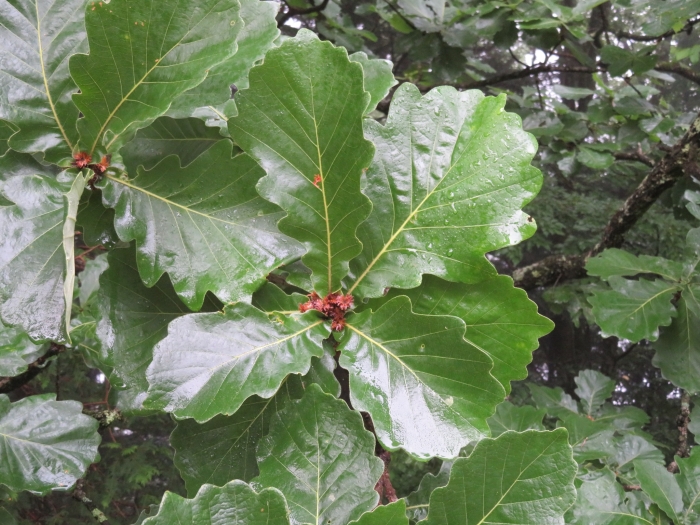Japanese Emperor Oak
(Quercus dentata)
Japanese Emperor Oak (Quercus dentata)
/
/

belvedere04
CC BY 4.0
Image By:
belvedere04
Recorded By:
Copyright:
CC BY 4.0
Copyright Notice:
Photo by: belvedere04 | License Type: CC BY 4.0 | License URL: http://creativecommons.org/licenses/by/4.0/ | Rights Holder: belvedere04 | Publisher: iNaturalist | Date Created: 2020-07-05T05:17:38-07:00 |

























Estimated Native Range
Summary
Quercus dentata, commonly known as Japanese Emperor Oak or Daimyo Oak, is a deciduous tree native to temperate forests and lower montane regions in East Asia, including Japan, Korea, Taiwan, and China. It can grow up to 82 feet tall with a trunk diameter of up to 3 feet 3 inches. The leaves of Quercus dentata are among the largest of all oaks, reaching up to 15.5 inches long and 12 inches broad, with a distinctive broad, rounded shape and coarse teeth along the margins. They are initially downy, becoming smooth on the upper surface as they mature. The acorns, which are a food source for wildlife, mature in September to October and are relatively large.
The Japanese Emperor Oak is valued for its large, ornamental foliage and is used as a shade tree in parks and large gardens. It is also appreciated for its historical significance in East Asian cultures. In cultivation, it prefers full sun to part shade and requires well-drained soils. While it is not commonly found in urban settings due to its large size, it can be an impressive specimen in the right context. The tree is also utilized in Korean and Japanese cuisine, where the acorns are processed and used as a food ingredient. However, gardeners should be aware of its potential to grow very large and should ensure adequate space for its development.CC BY-SA 4.0
The Japanese Emperor Oak is valued for its large, ornamental foliage and is used as a shade tree in parks and large gardens. It is also appreciated for its historical significance in East Asian cultures. In cultivation, it prefers full sun to part shade and requires well-drained soils. While it is not commonly found in urban settings due to its large size, it can be an impressive specimen in the right context. The tree is also utilized in Korean and Japanese cuisine, where the acorns are processed and used as a food ingredient. However, gardeners should be aware of its potential to grow very large and should ensure adequate space for its development.CC BY-SA 4.0
Plant Description
- Plant Type: Tree
- Height: 40-60 feet
- Width: 30-50 feet
- Growth Rate: Slow, Moderate
- Flower Color: N/A
- Flowering Season: Spring, Summer
- Leaf Retention: Deciduous
Growth Requirements
- Sun: Full Sun, Part Shade
- Water: Medium
- Drainage: Medium
Common Uses
Low Maintenance
Natural Habitat
native to temperate forests and lower montane regions in East Asia, including Japan, Korea, Taiwan, and China
Other Names
Common Names: Japanese Emperor Oak, Daimo Oak, Hu Shu, Kashiwa, Korean Oak
Scientific Names: , Quercus dentata, Quercus dentata subsp. eudentata, Quercus dentata subsp. laciniata, Quercus dentata subsp. pinnatiloba,
GBIF Accepted Name: